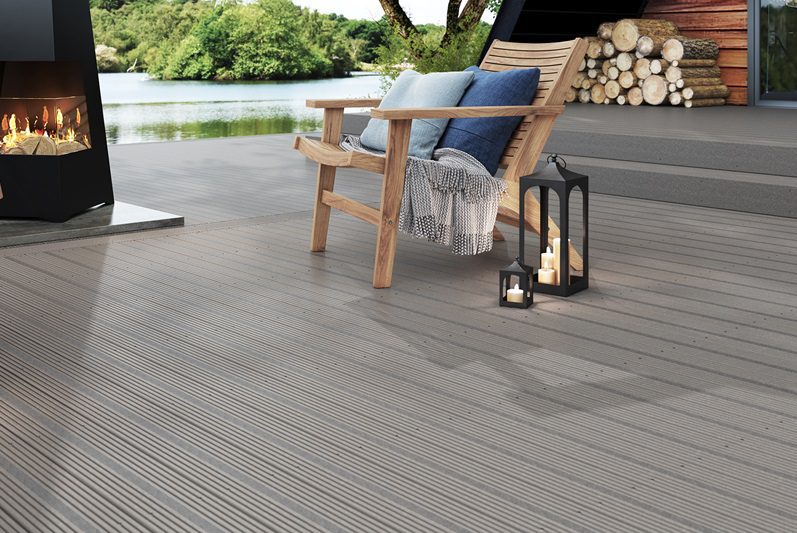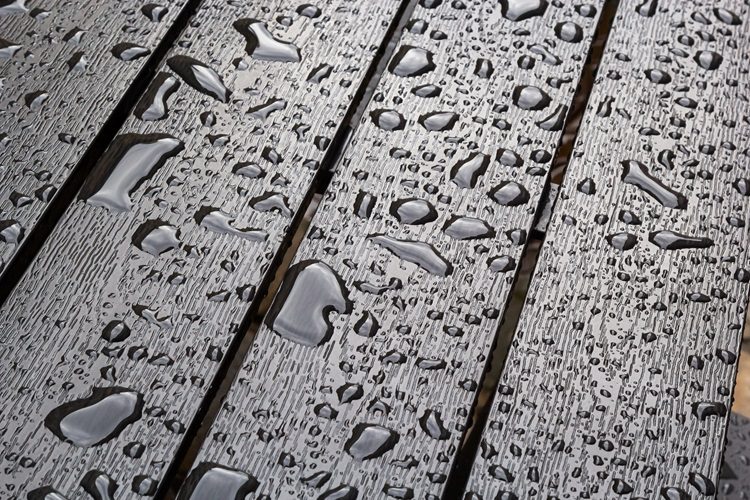When choosing decking for an outdoor area, safety is often a priority, especially if it’s for a public area or a family back garden.
Composite decking offers a wealth of slip-resistant qualities which we’ll look at in more detail below.
Does composite decking get slippery when wet?
Composite decking is specifically designed and manufactured to be as slip resistant as possible, so even in wet conditions, it’s a safer option than traditional timber. Our wide PVC decking is purpose built to be resistant to rotting, splitting and slipping.
When could decking become slippery?
Just like any outdoor surface, there are a few factors that can cause composite decking boards to become slippery. These include water and ice in colder weather. In addition, debris, such as leaves and mud, can create a ‘film’ on top of the decking making it slippery, and if this is not cleared away, it can cause mould to develop, which again can then create a slippery layer.
How is slip resistance tested?
The Health and Safety Executive’s preferred method of testing slip resistance is using the pendulum method (BS 7976: Parts 1-3, 2002). This test works by replicating the way a heel makes contact on a surface, in a pendulum-like action. This is often called a Pendulum Test Value (PTV) test and is used to measure the Coefficient of Friction.
How are decking boards slip rated?
Deck boards are rated by the Coefficient of Friction (CoF), which is a direct measure of the slip resistance of a floor. Any CoF value of 36 or over is regarded as ‘low slip’ on a flat surface, meaning the probability of one fall per million footfalls.
Ecodek’s slip resistance testing
Ecodek’s composite decking is slip resistance tested using the PTV test, in accordance with BS 7976-2:2002 + A1:2013 using a calibrated Munro slip tester using Slider 96. This means the slider imitates someone wearing everyday pedestrian shoes.
How to reduce slippery decking
Just like any surface, keeping your decking clean and clear of leaves, debris and mildew will help prevent a slippery film forming on its surface and also prevent a build-up of mould, which in turn can create a slippery surface. Sweeping your decking on a regular basis will help to do this, plus we advise giving your deck a clean with warm water and a suitable cleaning detergent twice a year or as required.

Anti-slip inserts for enhanced slip resistant decking
If you’re looking for additional anti-slip quantities, we offer high-grip inserts for our Heritage woodgrain decking and Signature AT and HD heavy duty ribbed and grooved collections. These can be laid in areas of high footfall to provide that extra reassurance and protect public liability.
If you have any questions about our decking collections and their slip resistance, call our friendly, expert team today on 01978 667 840 or contact us here .
